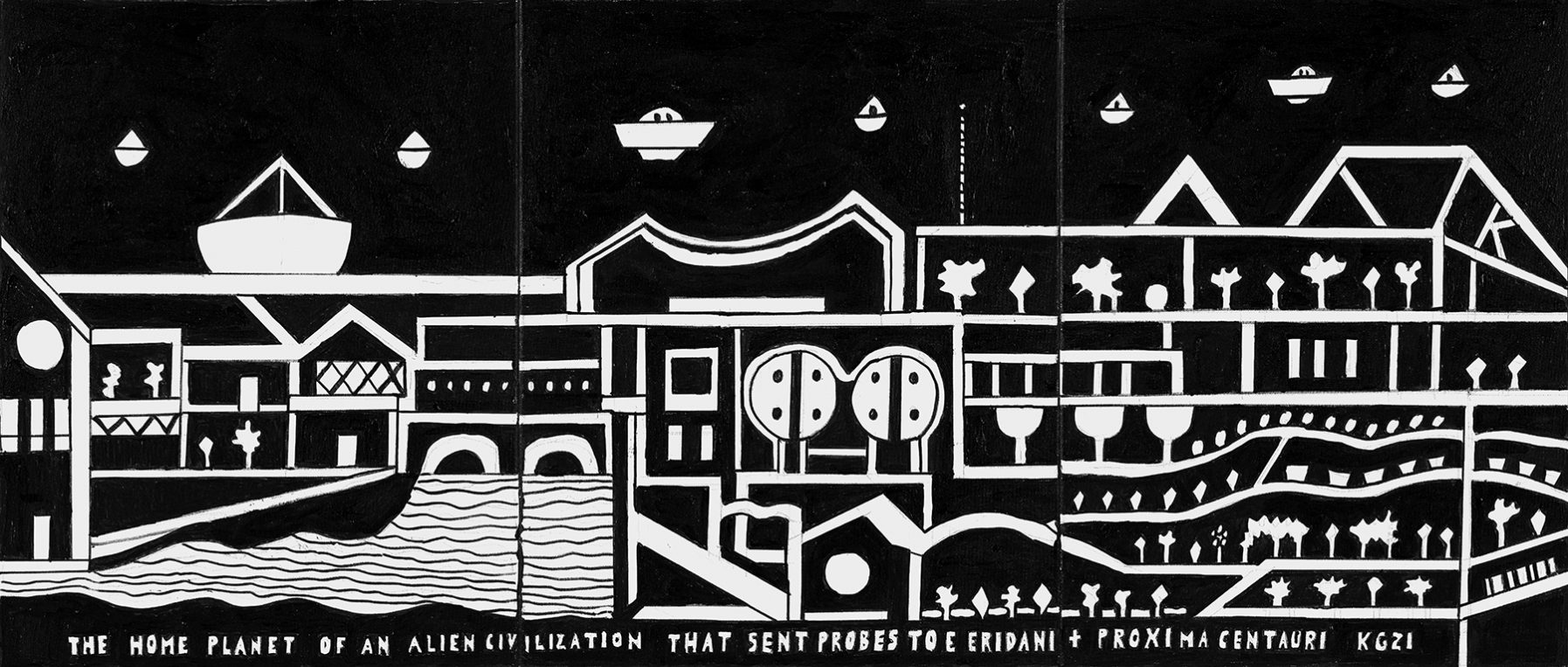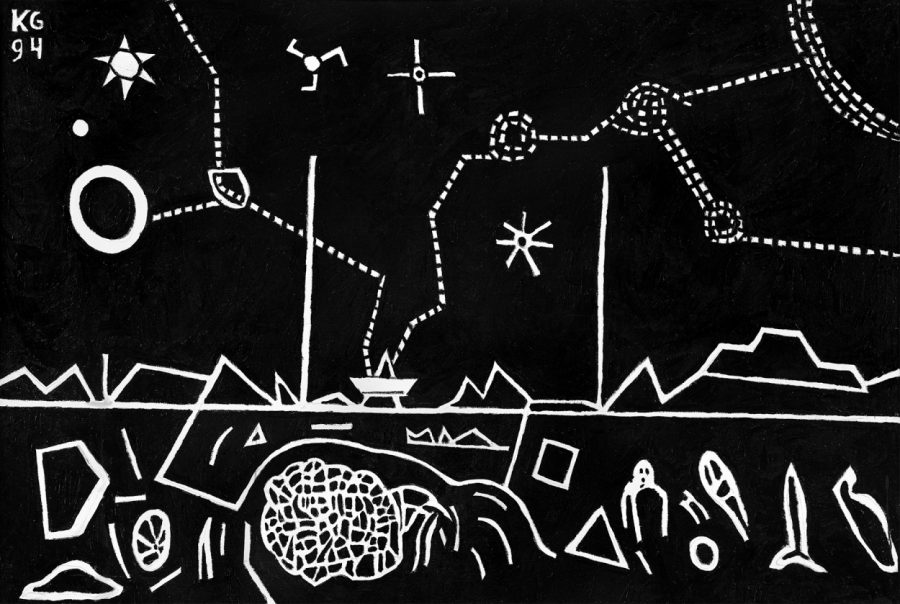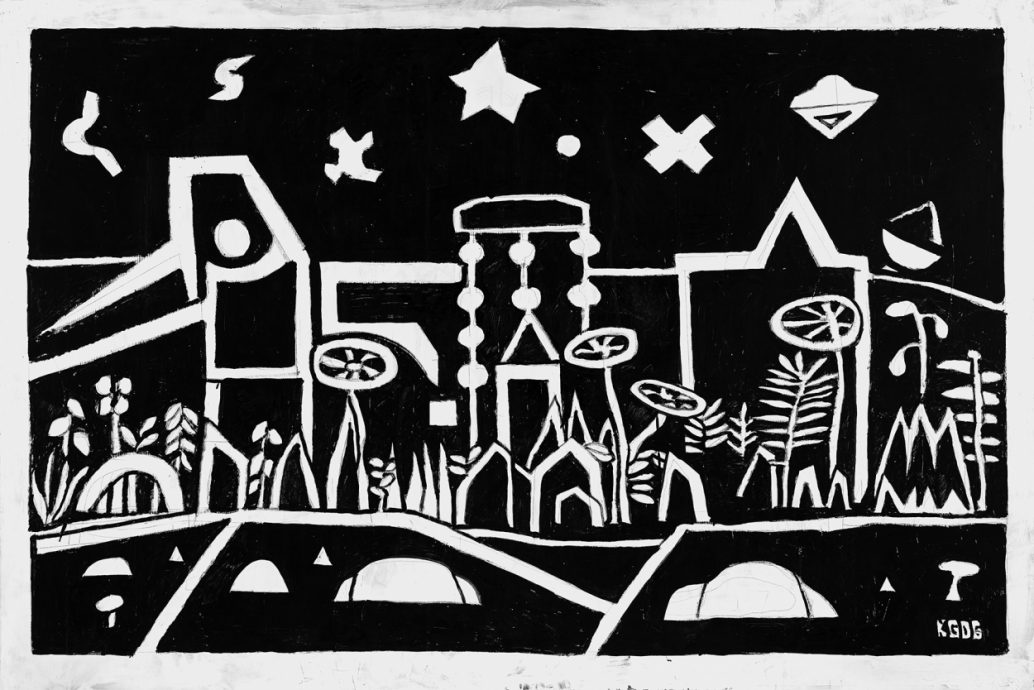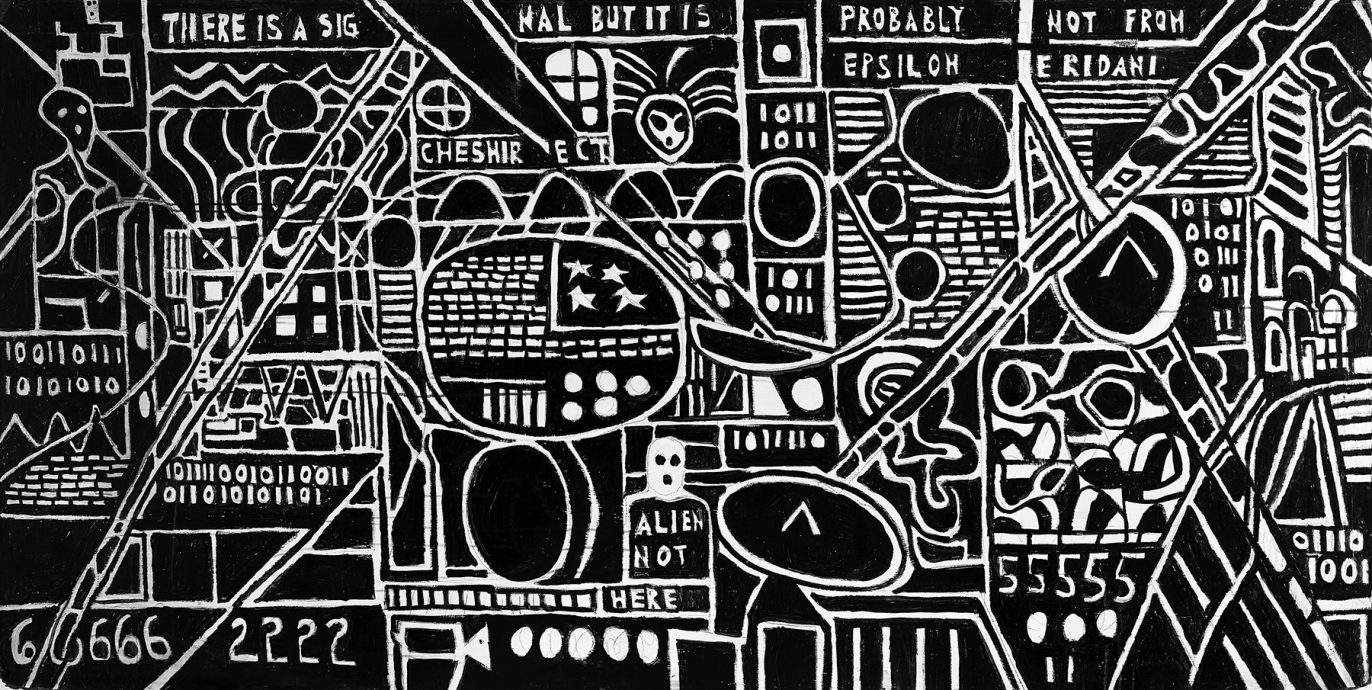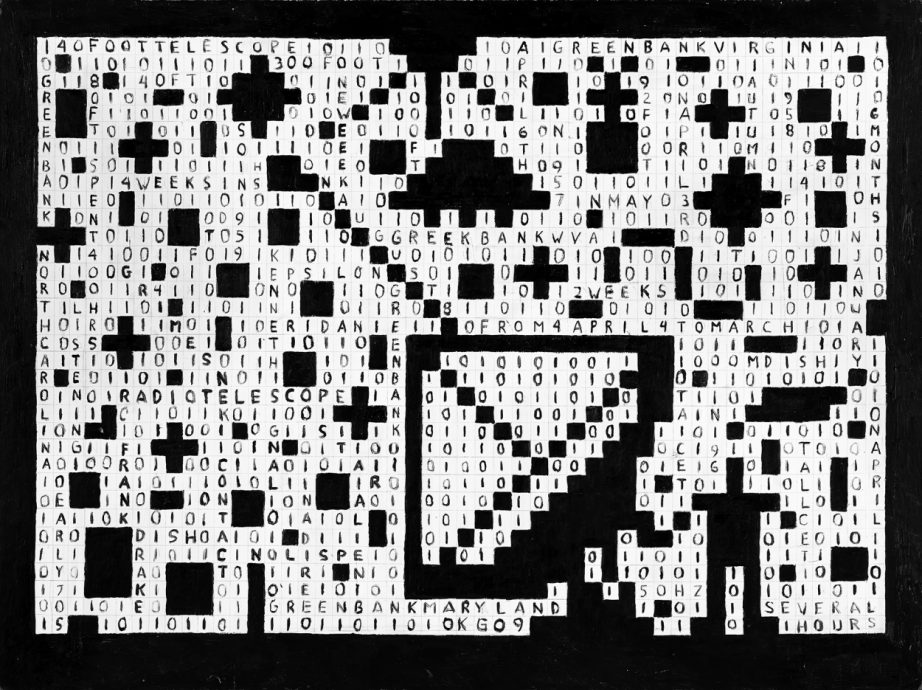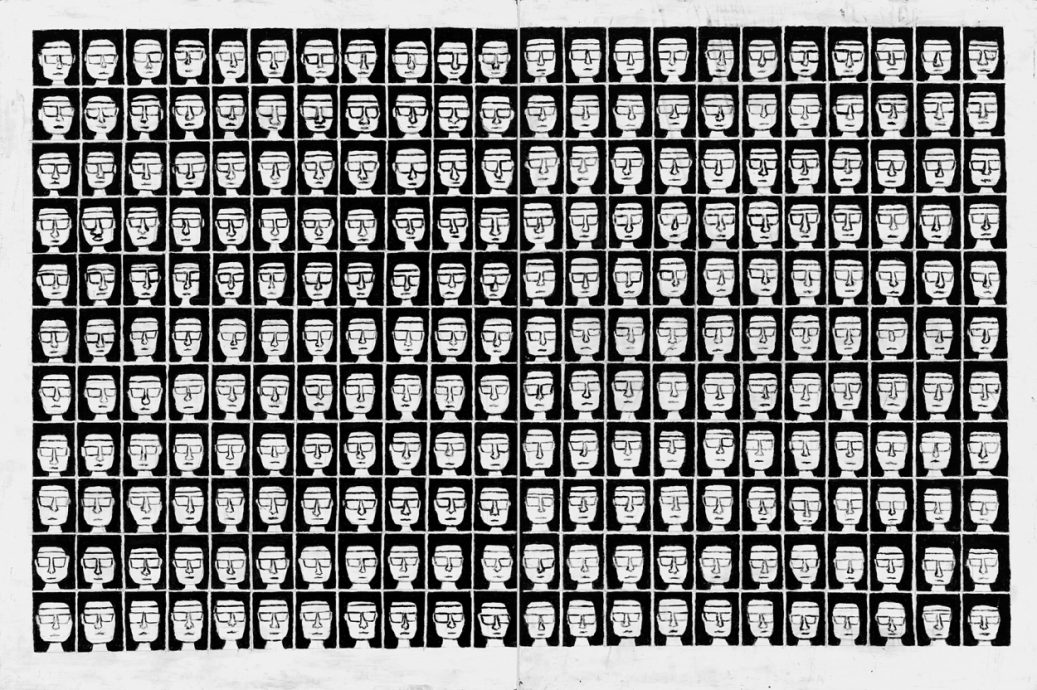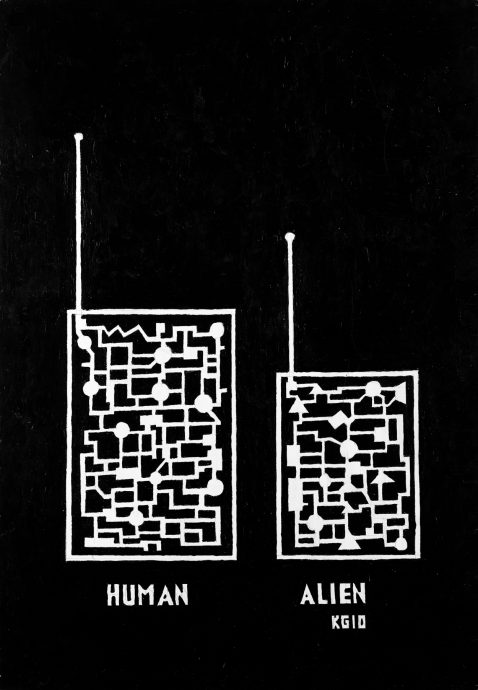Like God, aliens exist (or don’t) regardless of whether you believe in them. But belief is transformative: it can bring purpose, empathy, and meaning to a world that privileges certainty and predicates survival on selfishness. Ken Grimes is convinced aliens not only exist, but have been among us for decades. This faith has found facts in the slippery ephemera of UFO literature, military doublespeak, and Hollywood sci-fi. And it has flowered on 35 years’ worth of his canvases, mostly supergraphic black-and-white, often text-based, each effective in its communication that his conviction is a vibrant, visionary power.
Evidence for Contact moves briskly through Grimes’s voluminous output of 21st-century work. A few themes emerge: grids, which he fills with black gesso for landscapes that recall a crossword puzzle’s prompt for answers, the fiddly formations of Tetris, and early digital animation; binary code, whose zeroes and ones form both ominous data fields and friendly living figures; and an interest in portraiture that appears less about capturing some “truth” of the subject and more about amassing a community of fellow travelers. Asserting the presence of believers in his paintings is also urgent.
